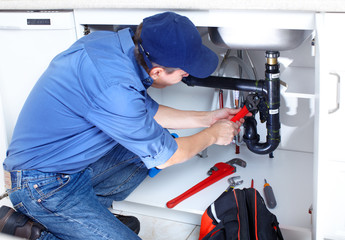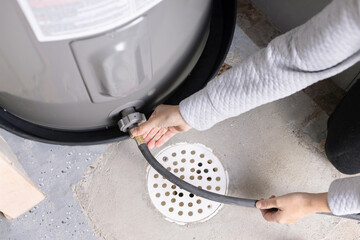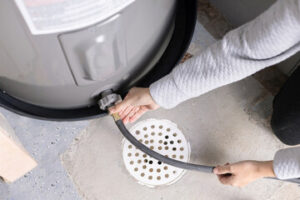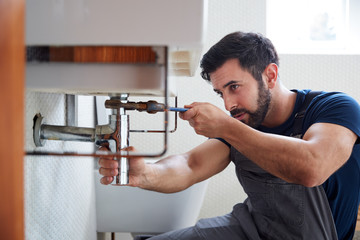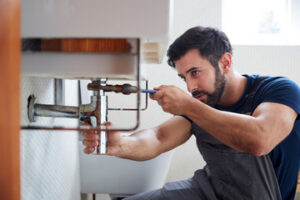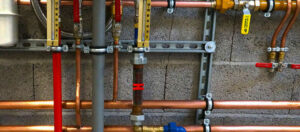Oharra Plumbing is one of the most important aspects of modern life. It ensures we have access to clean water and effective waste disposal systems. It also plays a crucial role in reducing the spread of waterborne diseases.
Knowing how your plumbing system works can help you avoid costly repairs in the future. This blog post will explore some of the plumbing basics, including its parts and functions.
Your plumbing system does two basic things: it delivers water to your home and it removes wastewater. The drains of your house contain the sewage from your toilets and sinks, as well as food particles and cleaning products. It’s critical that your plumbing system removes this waste without contaminating drinking water or creating disgusting mess in the process. When the drains clog, they’re unable to do their job and water backs up into your home. This is a huge health and safety hazard because it can lead to mold, bacteria and dangerous chemicals seeping into your home.
Clogged drains are also expensive to fix. Even though you might not be able to do much about it on your own at home, hiring a plumber is the best way to address the problem and prevent further damage. The plumber will inspect your drain lines and use professional tools to clear out any clogs or blockages. If you don’t schedule regular plumbing service, clogs can grow quickly and create more severe problems in your pipes and other fixtures.
You can help reduce the risk of clogs by only putting biodegradable waste down your drains and by regularly running hot water down your sinks and toilets. In addition, you should avoid pouring fats, oils and grease down your drains as they will build up and choke your pipes.
When your drains are clogged, you should be alert for any signs of a leak or a foul smell coming from your home’s pipes. If you notice a musty smell, this could indicate the presence of mold or mildew. Leaking drains also pose a health hazard because they can contaminate drinking water or cause disease-carrying bacteria to enter your home.
You should assess the condition of the drain every shift to ensure that suction is maintained and to determine if it needs to be changed. If the redivac drain’s green vacuum indicator appears pressed down or if the Jackson-Pratt drain bulb appears expanded, it must be replaced with a new, sterile drain using standard aseptic technique. The treating team should be notified immediately.
Pipes
Pipes are one of the most important parts of a plumbing system. They transport water and other fluids throughout your home or building, and they also carry waste to a sewer system. Pipes are made of different materials, and each type has its own pros and cons. Some types of pipes are sturdier and last longer than others, but all pipes should be well-maintained to avoid leaks or breaks.
There are several types of pipe used in construction, including metal, plastic and rubber. Metal pipes are usually stronger and more durable, but they can be expensive. Plastic and rubber pipes are less expensive but may not last as long. The type of pipe you need depends on what your plumbing system will be used for.
The most common type of pipe in residential homes is copper piping. It’s typically sold in varying lengths and thicknesses, with the thinnest types used for drain, waste and vent (DWV) lines. The thicker types of copper piping are known as potable water pipes and can be found in kitchens, bathrooms and other areas of the house.
Other types of pipe used in plumbing include galvanized steel, black iron and PVC. You may find these pipes running from toilets and sinks to the sewer line, or in some homes, they may run from gas appliances to the home. You can also find pipes in the home that are made of clay or concrete, but these are often reserved for industrial applications.
Most of the time, piping is joined by welding it together. The process is generally done using TIG or MIG welding techniques. When welded, the ends of the pipe must be prepped and sealed with an appropriate filler weld material such as polytetrafluoroethylene (PTFE) thread seal tape or oakum. Pipes can also be connected with threaded pipe and fittings, and these connections are usually sealed with a pipe thread compound or the appropriate solvent.
Pipes are often referred to as tubing in some contexts, but this can be misleading. Pipes are normally identified by their nominal size and wall-thickness, while tubing is often designated by an outside diameter, and it’s usually flexible and bendable.
Valves
Valves are used to control and direct the flow of water and other liquids through a pipe system. They are commonly used to shut off water access, prevent backflow and adjust the overall pressure within a system. In addition, valves allow homeowners to isolate sections of the plumbing for repairs and to shut off water lines in case of a major leak or burst pipe.
There are many different types of valves, each with its own set of uses. Some of the most common include ball valves, gate valves and globe valves. Each type of valve features its own unique design that affects how the valve functions.
The general principle behind all valves is that a seal moves to press against an orifice seat to either open or close. This can be done in a variety of ways, but some of the most popular include ball valves (in which a sphere with a hole through it is rotated inside two seals to create an opening and closing) and gate valves (which have a straight-through path when fully opened).
Other types of industrial plastic valves include needle valves (used for low-pressure applications) and plug valves (in which a cylindrical or tapered plug is rotated inside a body). The most important thing to remember when choosing a valve is that it should be designed for its particular application. Different materials offer different levels of strength, corrosion resistance and compatibility with specific fluids.
Corrosion can be a significant issue in any type of piping system, but it’s particularly important for industrial valves. Corrosion can damage components, reduce their lifespan and make them more prone to failure. In addition, corrosion can increase the chances of dangerous and costly malfunctions such as leaks or explosions.
To avoid these issues, it’s a good idea to regularly inspect all industrial plastic valves in your system and replace them when needed. Additionally, a thorough inspection of your entire piping system should be performed periodically to identify any potential problems.
Fixtures
Many people are familiar with standard plumbing fixtures like toilets, sinks, faucets and bathtubs. However, there are also many different types of plumbing fixtures available, each serving a unique function in homes and commercial buildings. Choosing the right plumbing fixtures can improve comfort and functionality, while also adding to the aesthetic of a space.
A fixture is any kind of device that connects to a pipe system and is used to supply water or drain waste. Generally, fixtures are made from materials that can withstand prolonged exposure to water and other chemicals, such as porcelain, stainless steel or cast iron. They typically have a drain in the bottom for the water to evacuate, and they may also have a stopper or a valve that can be manipulated to hold back water if desired.
Plumbing fixtures are essential to a building’s overall operation, and it is important to choose high-quality pieces that will last for a long time. When shopping for new fixtures, consider factors such as style, durability, efficiency and price. It is also a good idea to consult with a professional plumber who can offer advice on the best options for a particular home or business.
The most common plumbing fixtures include toilets, showers and bathtubs, kitchen sinks and faucets, laundry tubs, and bar sinks. Many of these items are used on a daily basis, and it is important to select fixtures that are easy to use and maintain. It is also a good idea to purchase energy-efficient fixtures, such as low-flow toilets and shower heads, which can help to reduce the amount of water that is wasted each day.
While plumbing fixtures can be damaged by various factors, one of the most common causes is a loose connection. Loose connections can lead to water leaks, which can damage the surrounding area and cause mold and mildew growth. To prevent this, it is important to tighten all fixture bolts on a regular basis. However, overtightening can actually make the bolts looser over time, so it is important to find the correct balance between stability and tightness.
